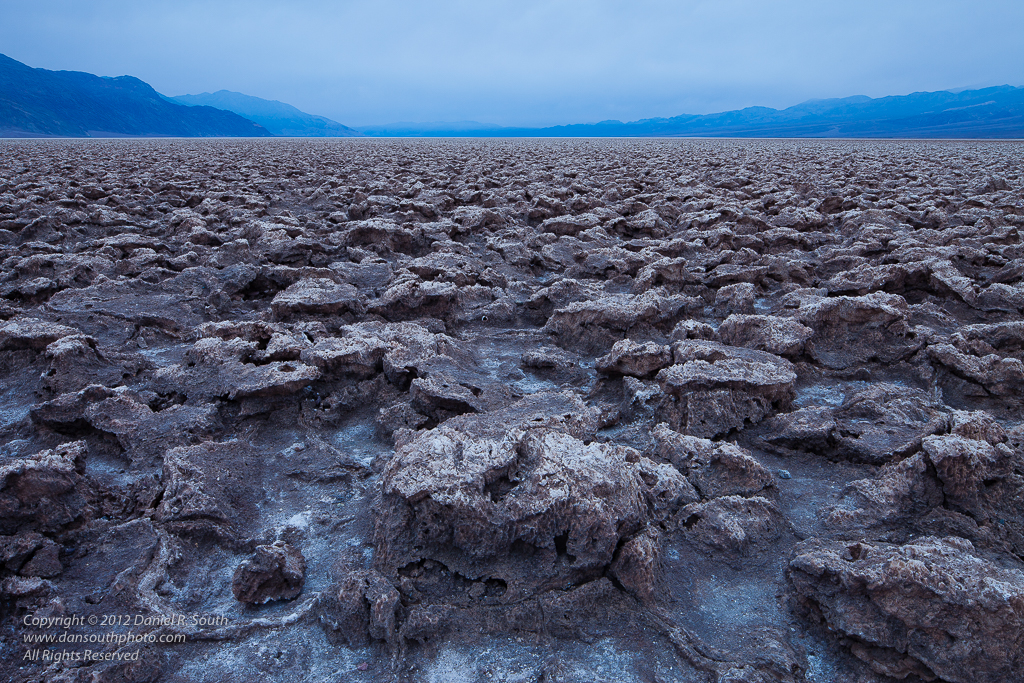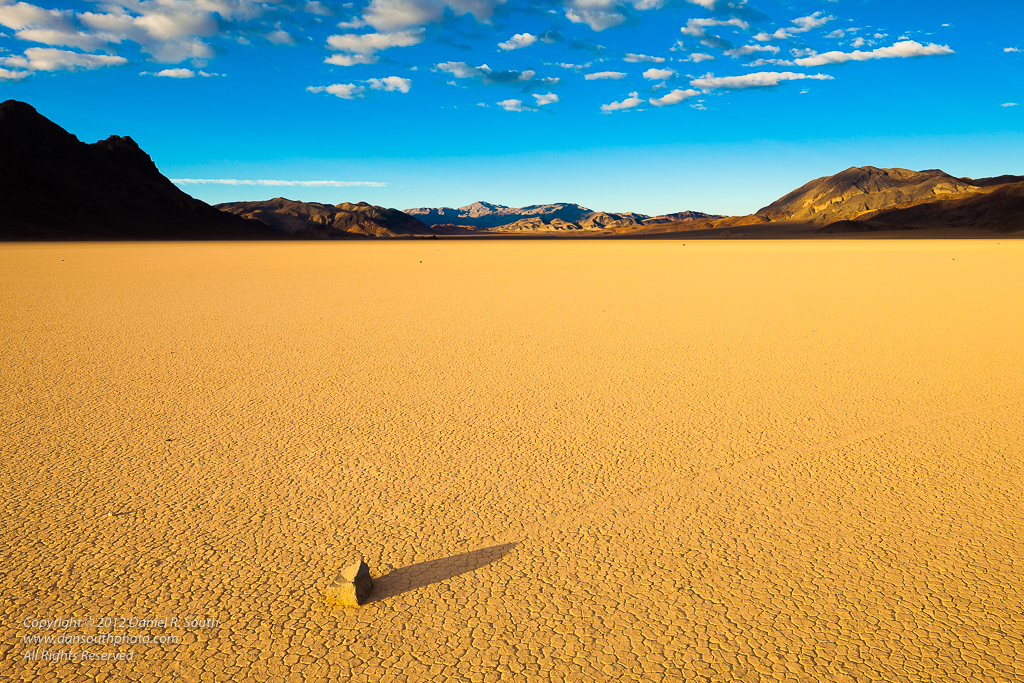A name like 'Death Valley' suggests a harsh and forbidding wasteland, a barren cavern of dust and sand that one would be better off avoiding. The moniker is not entirely unjustified. The valley floor maintains the highest consistent summer temperatures of any location on the Earth's surface - air temperatures top out in the low 130's (Fahrenheit), and the ground temperature can exceed 200 degrees.
These extreme conditions present significant dangers for any human activity. Simply driving an automobile on paved roads can be hazardous as tires are likely to blow out under the strain. Of course, if your car does fail, stay with it. Walking for help in these conditions will almost certainly result in disaster.
Fortunately, the valley enjoys milder temperatures in the late autumn, through the winter months, and into early spring. This cooler season provides the opportunity to explore the park's many wonders.
Death Valley is more than sand dunes and salt flats. The diverse landscape changes significantly every few miles. There are new glimpses of a complex and unexpected beauty at every twist in the road.
Zabriskie Point
Death Valley contains extensive areas of 'badlands'. Badlands are areas of exposed clay that are impermeable to water. Since no water can penetrate the surface, no vegetation grows anywhere in the area.
Zabriskie Point offers a 270-degree view of the badlands. It's easily accessible - a short walk up ramp just off of one of the park's main roads.
I made a number of stops at Zabriskie Point while visiting the park - I kept finding new viewpoints and compositional ideas. This shot is a very popular view, but I timed it as the rising sun lit the distant Panamint Mountain range. This adds a significant dimension of color and shadow that's not visible at any other time of day.
 |
| Zabriskie Point at First Light - Death Valley National Park |
Badwater
Badwater Basin contains the lowest surface elevation in North America at 272 feet below sea level. Visiting the extensive salt flats at Badwater is a uniquely memorable experience, but be sure to bring sunglasses to deal with the glare of the sun reflecting off of the white salt, and as always, an abundant supply of water.
Here is a shot taken from the Badwater salt flats at dawn. Note the crescent moon at the top of the frame.
 |
| Sunrise and Crescent Moon, Badwater Basin, Death Valley |
Mesquite Dunes
No portfolio of Death Valley would be complete without sand dunes. Death Valley's sand dunes have appeared in many movies including the original Star Wars. Here's a shot of the Mesquite Dunes near Stovepipe Wells.
 |
| Mesquite Dunes and Distant Mountains, Death Valley, NP |
The Devil's Golf Course
One of the strangest and most forbidding landscapes that you'll ever see, the Devil's Golf Course is a large field of beach ball-sized lumps of clay covered with jagged crystals. Looking out over the 'Golf Course' is like looking into the mouths a hundred thousand sharks. It's unnerving to say the least.
I took this shot from the parking area as dusk fell on an overcast day. The cold light emphasized the forbidding bleakness of this unique feature.
 |
| The Devil's Golf Course - Death Valley National Park |
Ghost Towns
Numerous ghost towns exist in and around Death Valley National Park. The towns are typically remnants of mining or gold prospecting operations gone bust.
The most impressive ghost town in the area is Rhyolite, Nevada just a few miles beyond the park's northeastern border.
 |
| General Store, Rhyolite Ghost Town, Nevada |
Racetrack Playa
Death Valley National Park is home to one of the world's great mysteries: Racetrack Playa, where rocks appear to blow in the wind and leave trails in the surface. No one has ever seen the rocks move, but everything from tiny pebbles to rocks the size of a large loaf of bread leave have trails behind them.
The prevailing theory is that the surface becomes slick when rain falls. The rocks are then pushed by brisk winds channeled through a narrow mountain valley.
However this phenomenon may occur, it was a thrill to visit the spot where the magic happens.
 |
| Moving Rock, Racetrack Playa, Death Valley National Park |
I hope that you have enjoyed these images of Death Valley. If you have visited the park before, I hope that you recognize some familiar places. If you haven't visited yet, I hope that these images have provided insight into a beautiful landscape with a mysterious name.
Over the coming months I'll be sharing more photos of Death Valley and more stories of my adventures in the park. Thank you for visiting today, and please stop back soon!
Camera:
Canon EOS 5D Mark II
Lenses:
Canon 16-35 f/2.8L II
Canon TS-E24 f/3.5L II
Canon 24-105 f/4L IS
Canon 70-200 f/4L IS
Wishing you great light and meaningful moments!
Copyright © 2012 Daniel R. South
All Rights Reserved